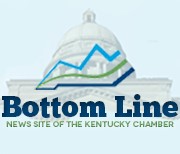This OSHA Outreach Training Program gives a broad overview of the most significant OSHA topics and regulations. Taught by an experienced OSHA authorized instructor, the 10-Hour course will provide participants with one and a half days of intensive review of current OSHA requirements in the area of occupational safety and health. Attend this course and receive practical, proven safety information that you can implement at your facility, including:
- Understanding what regulations apply to your company
- Understanding what training is required and recommended for your company
- How to identify and eliminate potential hazards and violations
- How to handle an OSHA inspection like a professional
- How to effectively train employees
- How to maintain exceptional written programs, records and documentation for your safety program
Day One
8 a.m. Registration and Continental Breakfast (provided)
8:30 a.m. Introduction to OSHA
- Review of OSHA Act, purpose, history and scope
- Fatalities and catastrophes
- Employee rights and employer responsibilities
- OSHA assistance and website
- Filing a complaint
Inspections and Most Cited Violations
- Inspections –priorities, process and penalties
- Most cited citations
- Inspection response procedures and options
Recordkeeping
- Review of records employers are required to keep
- Calculating TCR and DART rates
- Determining recordable injuries and illnesses
- Use of 300 log, 301 form, and 300A summary
- Reporting to OSHA and access to records
- Review of current interpretations
- “Is it Recordable” exercise
Exit Routes and Emergency Preparedness
- Permissible egress components
- Arrangement and access to exits
- Exit discharge
- Employee notification systems
- Emergency action written plan elements
- Training requirements
Fire Protection
- Identification of workplace fire hazards
- Requirements for portable fire extinguishers
- Fixed extinguishing systems
- Fire prevention written plan elements
- Training requirements
Walking/Working Surfaces
- Housekeeping and maintenance of aisle ways
- Fixed and portable ladders, stairs and scaffolding safety requirements
- Floor loading and floor/wall openings and holes
- Open-sided floors and platforms
- Slips, trips and falls
Electrical I
- Overview of electrical standards
- Electrical definitions
- Common electrical violations and requirements
- Electrical power tool safety
- Electrical safe work practices – qualified vs. unqualified
- Training requirement
Personal Protective Equipment
- General requirements – employer responsibilities
- PPE hazard assessment
- Selection, use, maintenance, storage and limitations
- Training requirements
5 P.M. Adjournment
Day Two
8:30 a.m. Hazard Communication I
- Overview of Hazcom requirements
- Determination of physical and health hazards
- Routes of entry
- Labeling and MSDS
- GHS – globally harmonized system
- Hazardous communications written program
- Training requirements
Safety and Health Programs I
- Management Leadership
- Worker Participation
- Hazard Identification and Assessment
- Hazard Prevention and Control
- Education and Training
- Program Evaluation and Improvement
Machine Guarding
- Requirements for all machines
- Types of machine hazards
- Methods of guarding
- Training requirements
Lockout / Tagout
- Scope of standard
- Energy control programs and procedures
- Exceptions to LOTO
- Authorized, affected and other training requirements
- LOTO hardware and devices
- Group LOTO, shift change and contractor procedures
- Periodic inspection
